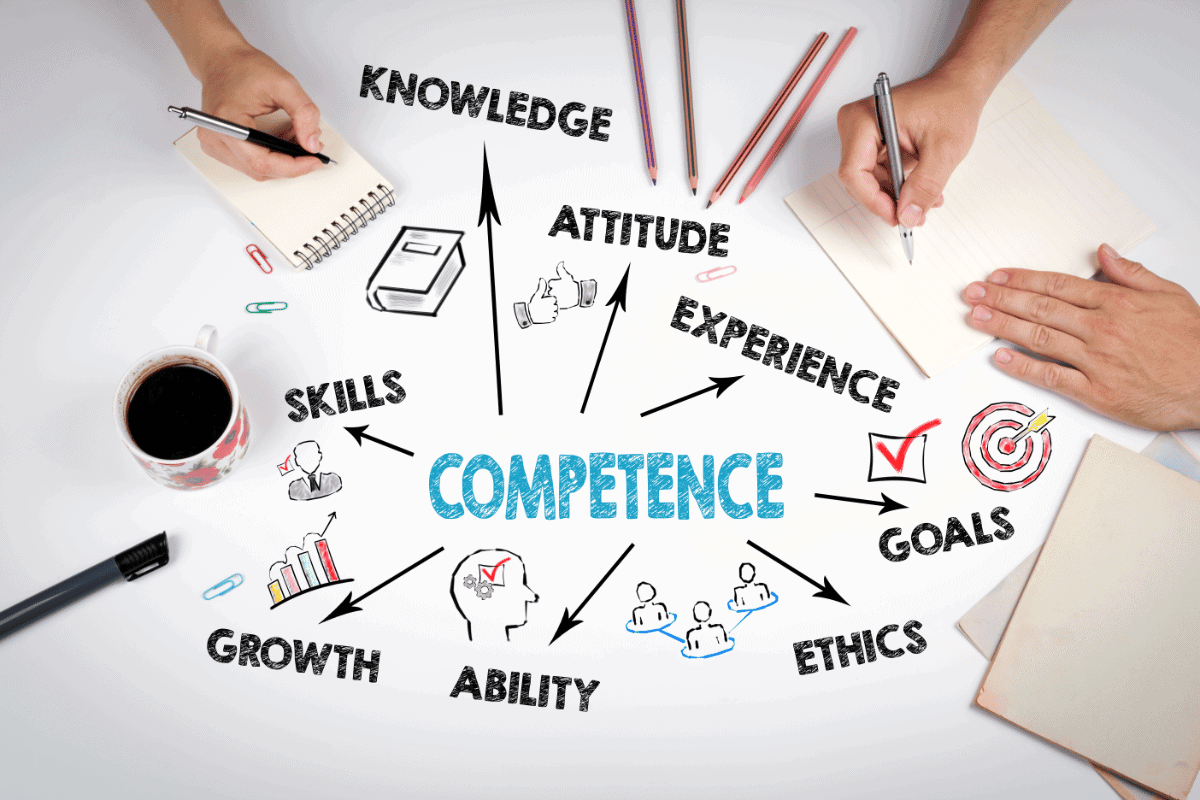Soft Skills Competency Framework
In today’s dynamic and constantly evolving job market, it is becoming increasingly important for individuals to possess not only technical skills but also a range of soft skills to succeed in their careers. Soft skills refer to the personal attributes and abilities that enable individuals to interact effectively and harmoniously with others. They are often intangible qualities that are difficult to measure but are highly valued by employers.
What is a Competency Framework?
A competency framework is a structure that outlines the key competencies required for success in a specific job or field. It provides a clear roadmap for individuals and organizations to identify, develop, and assess the skills and behaviors needed for optimal performance. A well-designed competency framework serves as a valuable tool for aligning talent management practices, such as recruitment, training, and performance evaluation, with organizational goals and objectives.
Definition of Competency Framework
A competency framework can be defined as a comprehensive set of competencies, knowledge, skills, and behaviors that are required for individuals to perform their roles effectively. It provides a standardized framework for assessing and developing the capabilities of employees, ensuring that they have the necessary skills and qualities to meet job requirements and contribute to organizational success.
Why is a Competency Framework Important?
A competency framework is crucial for several reasons. Firstly, it provides a clear and consistent basis for defining job requirements and expectations, which helps in attracting and selecting the right candidates during the recruitment process. Secondly, it enables organizations to identify skills gaps and develop targeted training and development programs to bridge those gaps. Moreover, a competency framework provides a fair and objective basis for performance evaluation, promoting transparency and accountability within the organization.
Benefits of Using a Competency Framework
Using a competency framework offers numerous benefits to both individuals and organizations. For individuals, it provides a clear roadmap for career progression and development, allowing them to identify areas for improvement and acquire the necessary skills and competencies to reach their goals. It also increases their self-awareness and understanding of their strengths and weaknesses.
For organizations, a competency framework helps in streamlining talent management practices and aligning them with the overall business strategy. It ensures that the right people are in the right roles, enhancing productivity and performance. By providing a consistent basis for recruitment, training, and performance evaluation, it also enhances fairness and reduces bias in decision-making processes.
How to Develop a Competency Framework
Developing a competency framework requires a systematic approach and involves several key steps. By following these steps, organizations can create a comprehensive framework that accurately reflects the skills and competencies required for success:
Steps to Create a Competency Framework
To create a competency framework, the following steps can be followed:
- Identify the objective: Determine the purpose and scope of the competency framework.
- Conduct job analysis: Analyze the key roles and responsibilities within the organization to identify the core competencies required for each role.
- Identify core competencies: Identify the essential knowledge, skills, and behaviors that are critical for success in each role.
- Organize competencies: Group the identified competencies into meaningful categories or clusters.
- Define proficiency levels: Define the expected levels of proficiency for each competency, ranging from beginner to expert.
- Develop behavioral indicators: Define the observable behaviors that demonstrate proficiency in each competency.
- Validate the framework: Obtain feedback from relevant stakeholders to ensure the accuracy and comprehensiveness of the competency framework.
- Implement and review: Integrate the competency framework into talent management practices and regularly review and update it to reflect changing business needs.
Identifying Core Competencies
Identifying core competencies is a critical step in developing a competency framework. Core competencies are the key skills and behaviors that are essential for success in a specific role or job. These competencies are typically unique to an organization and are aligned with its strategic goals and objectives. To identify core competencies, organizations can conduct job analysis, which involves observing, interviewing, and collecting data from employees who are performing well in their respective roles. The data collected can then be analyzed to identify the behaviors and skills that are common among high-performing employees.
Aligning Competencies with Organizational Goals
Aligning competencies with organizational goals is essential to ensure that talent management practices are in sync with the overall business strategy. Competencies should be designed to support the achievement of organizational objectives and should reflect the desired culture and values of the organization. When developing a competency framework, it is important to involve key stakeholders, such as senior leaders and managers, to ensure buy-in and alignment with the organizational vision and objectives. Regular reviews and updates should be conducted to ensure that the competency framework remains relevant and aligned with changing business needs.
Soft Skills vs Hard Skills
While technical skills, also known as hard skills, are essential for performing specific tasks and job functions, soft skills play a crucial role in interpersonal interactions and overall success in the workplace. Soft skills are the personal attributes and abilities that enable individuals to communicate effectively, work collaboratively, demonstrate leadership, and adapt to changing circumstances.
Difference between Soft Skills and Hard Skills
The main difference between soft skills and hard skills is their nature and measurability. Hard skills are typically acquired through formal education, training, and industry certifications. They refer to the specific knowledge and abilities required for performing a particular job or task. Examples of hard skills include programming, accounting, data analysis, and project management.
In contrast, soft skills are more difficult to quantify and measure. They are often developed through experience, observation, and personal reflection. Soft skills encompass a wide range of attributes, including communication skills, teamwork, problem-solving, leadership, emotional intelligence, and adaptability. Unlike hard skills, which can be learned and assessed objectively, soft skills are more subjective and require self-awareness and continuous development.
Importance of Soft Skills in the Workplace
Soft skills are highly valued in the workplace for several reasons. Firstly, they enable individuals to communicate effectively and establish positive relationships with colleagues, clients, and stakeholders. Effective communication is essential for collaboration, conflict resolution, and conveying ideas and information. Secondly, soft skills contribute to strong leadership and management capabilities, allowing individuals to inspire and motivate others, delegate tasks, and navigate complex situations.
Moreover, soft skills are critical for adaptability and resilience in today’s fast-paced and constantly changing work environment. They enable individuals to embrace change, think critically, and find innovative solutions to challenges. Additionally, soft skills contribute to a positive work culture, fostering teamwork, trust, and employee engagement.
Combining Soft Skills and Hard Skills for Success
While both soft skills and hard skills are important, it is the combination of both that leads to optimal performance and success in the workplace. Technical skills provide the foundation for individuals to effectively perform their job functions, while soft skills enable them to collaborate, communicate, and adapt to diverse situations and challenges.
Organizations should strive to develop a well-balanced workforce that possesses both technical expertise and strong soft skills. By combining these two skill sets, organizations can enhance productivity, foster innovation, and create a positive work environment that attracts and retains top talent. Developing a competency framework that includes both soft skills and hard skills is crucial for identifying and nurturing these critical competencies within the organization.
Competencies within the Workplace
Competencies play a crucial role across various aspects of the workplace, from recruitment and hiring to performance evaluation and development.
The Role of Competencies in Hiring and Recruitment
Competencies are valuable tools for recruitment and hiring processes. By clearly defining the required competencies for a specific role, organizations can develop job descriptions, selection criteria, and interview questions that accurately assess a candidate’s fit for the position. Competencies provide a standardized basis for evaluating candidates, ensuring that the most suitable individuals are selected for the job.
During the recruitment process, competencies can also be used to identify skills gaps and development areas for potential candidates. This allows organizations to proactively address those gaps through training and development initiatives.
Developing Interpersonal Skills as Competencies
Interpersonal skills, which are a form of soft skills, play a crucial role within competencies within the workplace. Strong interpersonal skills, such as effective communication, teamwork, and conflict resolution, are essential for building and maintaining positive relationships with colleagues and clients. They contribute to a harmonious work environment and foster collaboration, trust, and productivity.
Organizations can develop interpersonal skills as competencies by providing training and development opportunities that focus on enhancing communication, empathy, active listening, and social awareness. By incorporating interpersonal skills into competency frameworks, organizations can ensure that individuals possess the necessary capabilities to excel in their roles and contribute to the overall success of the organization.
Using Competencies for Performance Evaluation
Competencies also play a significant role in performance evaluation. By clearly defining the expected competencies and proficiency levels for each role, organizations can objectively assess employee performance and provide constructive feedback for improvement Defining the expected competencies and proficiency levels for each role within an organization provides a clear framework for assessing employee performance. This framework allows for objective evaluation based on predetermined criteria, rather than subjective opinions or biases.
By having clearly defined competencies and proficiency levels, organizations can establish consistent and fair performance evaluation processes. This ensures that all employees are measured against the same standards, promoting equality and transparency within the organization.
Additionally, this approach enables organizations to identify areas where employees may need improvement or further development. With specific proficiency levels defined for each competency, managers can provide constructive feedback to employees about their performance, highlighting areas where they are excelling and areas where they could improve. This feedback can then be used to create targeted development plans and support the growth and improvement of employees.
Furthermore, providing employees with clear expectations and feedback can lead to increased motivation and job satisfaction. When employees understand what is expected of them and receive constructive feedback on their performance, they are more likely to feel engaged and valued in their role.
This, in turn, can lead to increased productivity and performance within the organization.
In summary, clearly defining competencies and proficiency levels for each role enables organizations to objectively assess employee performance and deliver constructive feedback for improvement. This approach promotes fairness, consistency, and employee development, ultimately contributing to the overall success of the organization.
F.A.Q.
Q: What is a soft skills competency framework?
A: A soft skills competency framework is a structured set of skills and behaviors that are essential for success in the workplace. It defines the specific competencies required for each role within an organization.
Q: Why is a soft skills competency framework important?
A: A soft skills competency framework helps organizations identify and assess the skills required for different roles. It provides a clear roadmap for hiring, training, and development, ensuring that employees have the necessary skills to succeed in their jobs.
Q: How is a soft skills competency framework different from a competency model?
A: A competency model focuses on the skills and knowledge required for a specific job or role, whereas a soft skills competency framework provides a broader set of skills that are relevant across different roles and departments within an organization.
Q: How are competencies determined for each role?
A: Competencies for each role are determined through a combination of job analysis, interviews with subject matter experts, and consultation with stakeholders. The specific skills and behaviors required for each role are identified and documented in the competency framework.
Q: Are the competencies the same for every role?
A: No, the competencies can vary for different roles within an organization. While there may be some overlap in certain skills, each role will have its own unique set of competencies based on the specific requirements of the job.
Q: How can a soft skills competency framework be used in hiring?
A: A soft skills competency framework can be used in the hiring process to assess candidates’ skills and behaviors. By aligning the job requirements with the competencies outlined in the framework, organizations can make more informed hiring decisions and ensure a better fit between candidates and roles.
Q: Can a soft skills competency framework be used for employee development?
A: Yes, a soft skills competency framework can be an invaluable tool for employee development. It can be used to identify skill gaps, create personalized development plans, and provide targeted training and coaching to help employees enhance their soft skills.
Q: How often should a soft skills competency framework be updated?
A: A soft skills competency framework should be reviewed and updated regularly to ensure its relevance and alignment with the changing needs of the organization. It is recommended to conduct reviews at least once a year or whenever there are significant changes in roles or organizational priorities.
Q: Can a soft skills competency framework be customized for different industries?
A: Yes, a soft skills competency framework can be customized to reflect the unique requirements of different industries. While there may be some core competencies that are applicable across industries, organizations can tailor the framework to include industry-specific skills and behaviors.
Q: How can organizations implement a soft skills competency framework?
A: To implement a soft skills competency framework, organizations should start by conducting a comprehensive assessment of their current skills and competencies. They can then develop the framework based on the findings and communicate it to employees through training and awareness programs. Ongoing monitoring and evaluation are also important to ensure the effective implementation of the framework.








